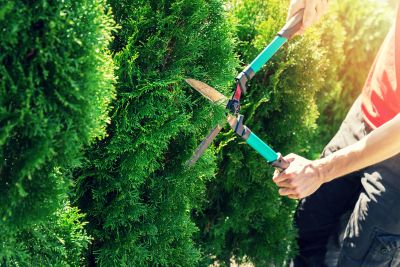What Trees Make Good Hedges?
Farmers have been using trees as hedge plants for hundreds of years. Often, they would use a local tree species that grows well in the area and simply plant them close together to form hedgerows. Today, homeowners tend to make hedges by planting one type of evergreen tree in a straight line. Popular choices for trees to prune into hedges include slender, upright evergreens like Spartan juniper or Emerald arborvitae. These trees both grow to 15 feet (5 m.) tall and 3 feet (1 m.) wide. In many cases, evergreens are the best trees for hedges. They retain their foliage year round so your hedge can serve as a windbreak or a privacy screen during all four seasons. If you are looking for a quick windbreak, one of the best trees for hedges is the fast-growing Green Giant thuja. Left to its own devices, Green Giant gets 30 to 40 feet (9–12 m.) tall and half as wide. Also good for large landscapes, Green Giant will need steady pruning for smaller backyards. Trimming a hedge tree can take the form of shearing. Varieties of holly (Ilex spp.) also make great evergreen hedges. Holly is attractive, grows red berries beloved by birds, and the trees are long lived. This can prove important in a hedge. Flowering deciduous trees make charming hedges to mark a property line or section off an area of the backyard. The look of the hedge changes from season to season. You could use any combination of fruit trees for a flowering hedge. Don’t forget to consider trees like bottlebrush buckeye (Aesculus parviflora), summersweet (Clethra alnifolia), border forsythia (Forsythia intermedia), or Chinese loropetalum (Loropetalum chinense). Many homeowners decide to include a mix of different trees and shrubs into a hedge, as this offers protection from losing the entire hedge in case of a tree disease or devastating pest. If you mix evergreens with deciduous and flowering trees, you are also increasing your landscape’s biodiversity. This creates a habitat for a wide variety of beneficial insects, birds and animals.
